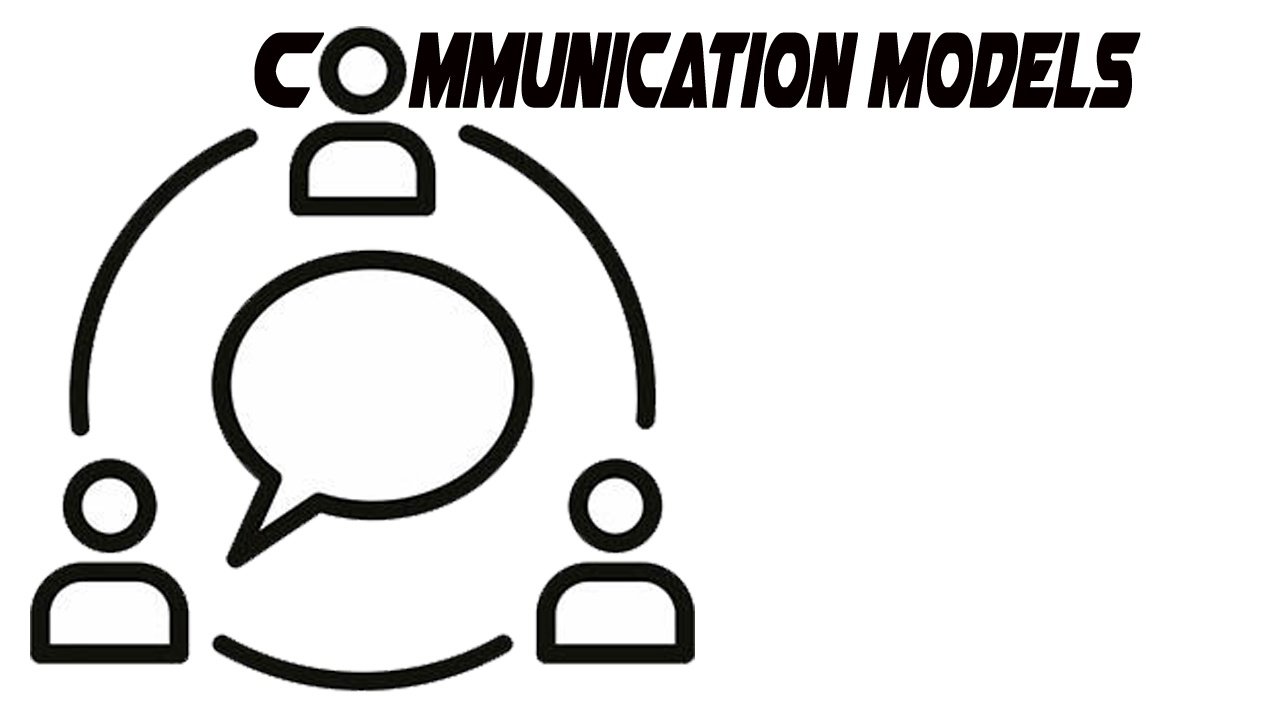One speaks, one listens – communication is that simple. At least in theory. In practice, the world looks very different. Messages between the lines, body language, i.e. facial expressions and gestures, as well as individual interpretations make it difficult to correctly decipher the messages. How can marketers still successfully get their messages across to men and women? With a little theory in mind, the chances of success increase. These provide you with communication models. What is this all about and what theories every marketer should know? Let’s get an overview!
At a glance – examples of communication models for marketers:
- The third-person effect
- The spiral of silence
- The 4 ears model
- The maxims according to Grice
- The Shannon & Weaver transmitter-receiver model
- The Organon model from Bühler
- Sigmund Freud’s iceberg model
- The multi-step flow model according to Lazarsfeld
The basics: communication models, Schulz von Thun and Watzlawick

Before we look at different models of communication, we need to clarify the basics. What is communication actually? Quite simply: two people (or animals, maybe also plants) exchange signals. One sends a message, the other receives it. In technical jargon, we would say: One encodes – another decodes signals. There are many views on the course of this process. So that we can better imagine the process, scientists such as Friedemann Schulz von Thun and Watzlawick carried out research and developed communication models.
- What are communication models?
- What do communication models do?
- What communication models are there?
- 1. The third-person effect
- 2. The spiral of silence
- 3. The 4-ear model according to Schulz von Thun
- 4. The maxims according to Grice
- 5. The Shannon & Weaver transmitter-receiver model
- 6. The Organon model from Buhler
- 7. Sigmund Freud’s iceberg model
- 8. The multi-step flow model according to Lazarsfeld
- The axioms according to Watzlawick
- Which communication model is the best?
What are communication models?
Using models of communication, scientists try to understand how the exchange of signals between two people works. How is information transmitted? What are the roles of the parties in a conversation? Which factors influence the exchange of information? How do body language, facial expressions, and gestures go hand in hand? Communication models answer these and many other questions.
The theoretical approaches try to present the phenomenon of interpersonal communication in a simple and understandable way. The interpersonal exchange of information is broken down into its individual levels so that in the end we know why misunderstandings arise, irony works, and much more.
What do communication models do?
As already indicated, the models of communication primarily help us to understand how information exchange works. But that’s not all!
With the knowledge of how signals are sent and interpreted, the theories also ensure that we can actively influence our communication success. In addition, they provide explanations for phenomena such as one-sided opinion-forming in society, influencer marketing, and the effect of mass media. So that we can understand all these curiosities, various scientists have developed various models of communication in recent years.
What communication models are there?
Along with the advancement of mankind, communication models are also constantly changing. If you search for the keyword “communication model examples”, you will immediately find an immense variety of theories, all of which attempt to explain the phenomenon of communication. Although they pursue a similar goal, the individual approaches diverge significantly in terms of their academic tradition, complexity, and content focus.
The theories can be roughly divided into two classes: general and psychological. While general communication models consider the exchange of information in an interdisciplinary manner, i.e. taking various sciences into account, psychological communication models have limited glasses. For us marketers, some are more relevant and others less. You should know these 8!
1. The third-person effect

If I asked you if you or your friends let yourself be influenced by a picture headline – what would you say? Most of you would answer, according to a 1983 study by sociologist Sociologist W. Phillips Davison: Not me, but definitely my friends. In a telephone survey of more than 700 Americans, Davison showed that individuals perceive media messages in such a way that they have a greater impact on other people than on themselves. Davison derived the so-called “third-person effect” from this discovery.
The theory is that because of personal biases, people tend to let messages from the mass media affect others rather than themselves. We can conclude from this that, according to the third-person effect, we tend to overestimate the effect of a mass communicated message on others and at the same time underestimate the effect of a mass communicated message on us.
2. The spiral of silence

Communication scientist Elisabeth Noelle-Neumann has not let go of the fact that some opinions are getting louder and louder and others are getting quieter. During federal election campaigns in the 1960s and 1970s, she, therefore, took a very close look at how public opinion is formed – and based on the results developed a new communication model: the spiral of silence. According to Noelle-Neumann’s theory, we tend to speak when we perceive our opinion as a majority opinion – and to remain silent when the opposite is the case.
If these phenomena go hand in hand, a spiral begins that turns the initial majority opinion into public opinion. The scientist ascribes a decisive influence on the media, primarily television, in her communication model: through one-sided presentations, they would have the power to generate majority opinions and thus to shape public opinion. The result: Perceived (!) Majority opinions are becoming more and more popular and individual views are being suppressed by the spiral of silence.
3. The 4-ear model according to Schulz von Thun

Do you have the feeling with some friends that they are getting everything you say down the wrong path? You are not alone in this! Everyone sends and understands messages individually. The Hamburg communication scientist Friedemann Schulz von Thun got to the bottom of this phenomenon and wanted to understand how a message is sent and received. The result of his years of research is probably the most famous of all interpersonal communication models: the four sides of the communication. Schulz von Thun’s communication model assumes that there are four ways in which messages can be sent or understood.
- The blue factual level: I communicate facts.
- The red level of appeal: I am making a request.
- The yellow relationship side: I express my relationship with my counterpart.
- The green side of self-revelation: I let you look behind my facade.
According to Schulz von Thun, there are four mouths and four ears. This means that both the sender and the recipient can take any of the four sides when (de) coding a message. In practice, for example, Schulz von Thun’s communication model looks like this: One person says the sentence “The traffic light is green.” Others either understand …
- I notice that the traffic light is green. Thanks for the info – blue page
- I’m supposed to go – red side
- He/she thinks that I am driving too slowly. I am a bad driver – yellow page
- He/she worries that we will be late for dinner – green side
4. The maxims according to Grice

Herbert Paula Grice is of firm conviction: Communication can only succeed if both parties have the same communication goal. His communication model is based on an exchange of information based on the principle of cooperation. This requires that those involved create each message taking into account two aspects: communication goals and the current point in time in the conversation. From this, Grice derived four conversation maxims, compliance with which is intended to increase the efficiency of communication processes. In his opinion, violations of the maxims lead to inefficiency.
- Quantity: Communicate as much as necessary and as little as possible.
- Quality: Only say what you know and what you can explain.
- Relevance: Say everything that belongs to the topic and nothing that does not belong to it.
- Clarity: Avoid ambiguity, ambiguity and communicate in a logical order.
5. The Shannon & Weaver transmitter-receiver model

Mathematicians Claude Shannon and Warren Weaver developed the most classic of all communication models. And that although they originally had a completely different goal. Actually, Shannon and Weaver wanted to improve telephone communication. The result was a communication model that unlocks the mystery of human interaction. And it’s pretty simple. They called it the Transmitter Receiver Model.
The communication model assumes that every exchange of information consists of two sides. One is the sender who wants to share a message, the other is the recipient who receives it and tries to understand it. In order for this to work, the receiver must decode the verbal and non-verbal signals from the transmitter. What sounds complicated actually only means: He/she takes note of the information and forms his / her rhyme from it. Only if nothing goes wrong can we, from Shannon & amp; Weaver speak of successful communication. If one of the two sides makes a mistake in coding or decoding, this results in interpretation errors.
6. The Organon model from Buhler

Limiting communication to just two parties was too easy for the language theorist Karl Bühler. He, therefore, developed a communication model that also includes another part: the object. This can but does not have to be, the subject of communication. It is also not in the focus. The center of the so-called Organon model (derived from the Greek term organum – the tool) is the signs that senders and receivers exchange. Depending on what the language sign refers to, Bühler defines the function of the utterance differently. He differentiates between the
- Expression function: The character relates to the sender.
- Representation function: The symbol relates to the facts.
- Appeal function: The sign refers to the recipient.
According to Bühler’s communication model, if the sender and recipient recognize which language function is currently being used, misunderstandings should be avoided.
7. Sigmund Freud’s iceberg model

Sigmund Freud justifies the fact that information is understood so differently with the complexity of communication. According to the psychoanalyst, only 20% of the communication process is visible. Freud calls this level the factual level. The remaining 80% are under the radar at the relationship level. If one level is disturbed, the other level is also affected. So, be careful: if the relationship level is not right, a factual conversation can quickly turn into a conflict. Since this division reminded him of an iceberg, he named his communication model after one. In practice, this means that we only perceive a fifth of the message through our senses. The rest, that is, all the interpretations and decodings, take place under the surface.
8. The multi-step flow model according to Lazarsfeld

Influencer marketing is a new trend? Think! As early as the 1960s, Elihu Katz and Lazarsfeld demonstrated that opinions are not formed directly from person to person but through opinion leaders. What we know today as influencer marketing, the scientists called the Multi-Step Flow of Communication. The tiered model of information exchange states that most people are not directly influenced by the mass media and instead form their opinions through opinion leaders who interpret media messages and put them into context.
Today we would call these people “influencers”: Individuals who for whatever reason, be it demographic or socio-economic factors or simply their interests, are perceived by others as interesting personalities – and therefore legitimate opinion makers. If you are concerned with influencer marketing, you should definitely take a closer look at the communication model of Katz and Lazarsfeld!
The axioms according to Watzlawick

“You can’t communicate”, this famous quote comes from Paul Watzlawick. It is one of the 5 axioms that scientists developed in the 1970s to explain human communication. With the axioms, Watzlawik emphasizes that human communication is not just about the exchange of factual content, but about an interest-based exchange of information. In practice this means: Not only is the response of person B to the statement made by person A important, but also the reaction that B’s reaction has on A also plays a role. With this, the scientist emphasizes in his communication model that a conversation lives from interactivity – and is not a one-man show.
In addition to the fact that we can not communicate, Watzlawick defined four further axioms in his communication model:
- Axiom on the content and relational aspect of communication
- The axiom for punctuation of sequences of events
- Axiom on digital and analog communication
- Axiom on symmetric vs. complementary communication
Which communication model is the best?

After looking at 8 exciting communication models, the question naturally arises:
Which communication model is the best?
You can imagine it: there is no general answer to this question.
Anyone who deals with influencer marketing should definitely take a closer look at the Multi-Step Flow. Copywriters should definitely take a closer look at the maxims of Grace, while experts in the field of internal communication should have a detailed date with Schulz von Thun and his 4-ear model. Whichever model you choose, they all have one thing in common: Communication is a complex process that requires care and planning. Messages are not only transmitted via factual content, but also via non-verbal signals. What you want to say will not necessarily be understood that way by your counterpart. If you keep that in mind, you have already taken a big step towards successful communication. And Friedemann Schulz von Thun, Watzlawick, and all the other experts in communication studies will help you with everything else.






